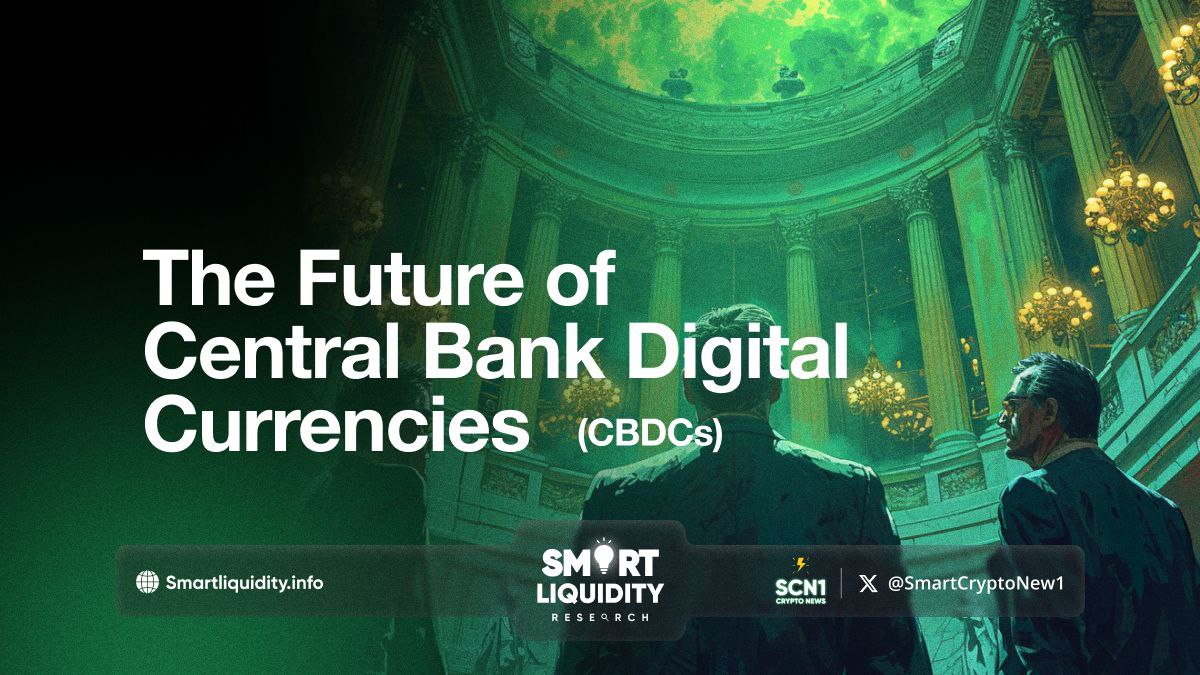The Future of Central Bank Digital Currencies (CBDCs)


The Future of Central Bank Digital Currencies (CBDCs)! Central Bank Digital Currencies (CBDCs) represent a significant shift in the way we perceive and utilize money. As digital transformations reshape financial systems worldwide, CBDCs emerge as a pivotal innovation. They promise to redefine monetary policies, enhance financial inclusion, and offer a more efficient means of transaction.
This article explores the future of CBDCs, examining their potential benefits, challenges, and the impact they might have on the global financial landscape.
Understanding CBDCs
CBDCs are digital forms of a country’s sovereign currency issued by its central bank. Unlike cryptocurrencies like Bitcoin, which operate on decentralized networks, CBDCs are centralized and regulated by national monetary authorities. They combine the efficiency and convenience of digital currencies with the stability and trust associated with traditional fiat currencies.
Potential Benefits of CBDCs
1. Enhanced Monetary Policy Implementation
CBDCs provide central banks with new tools to implement monetary policies more effectively. With real-time data on transactions, central banks can make more informed decisions regarding interest rates, inflation control, and economic stability.
2. Financial Inclusion
A significant portion of the global population remains unbanked or underbanked. CBDCs can offer a solution by providing access to financial services without the need for a traditional bank account. This can empower individuals in remote or underserved areas, fostering greater economic participation.
3. Reduction in Transaction Costs
Digital currencies can streamline payment systems, reducing the need for intermediaries and lowering transaction costs. This efficiency can benefit both consumers and businesses, facilitating faster and cheaper domestic and cross-border transactions.
4. Counteracting Illicit Activities
The traceability of CBDCs can help combat money laundering, tax evasion, and other illicit activities. By providing a transparent and secure transaction record, authorities can monitor and control unlawful financial practices more effectively.
Challenges and Concerns
1. Privacy Issues
The traceability of CBDCs, while beneficial for regulatory purposes, raises privacy concerns. Citizens may fear excessive government surveillance and loss of financial anonymity. Balancing transparency and privacy will be crucial in gaining public trust.
2. Cybersecurity Risks
As digital entities, CBDCs are susceptible to cyberattacks. Ensuring robust security measures to protect against hacking, fraud, and other cyber threats is essential for the stability and trustworthiness of CBDCs.
3. Technological Infrastructure
Implementing CBDCs requires a sophisticated technological infrastructure. Developing and maintaining this infrastructure can be costly and complex, especially for countries with less advanced technological capabilities.
4. Disruption to Traditional Banking
The introduction of CBDCs may disrupt traditional banking systems. Banks might face challenges in maintaining their roles as intermediaries, affecting their profitability and stability. This could lead to a reconfiguration of the financial sector.
Global Adoption and Future Prospects
Countries around the world are at different stages of exploring and implementing CBDCs. China is at the forefront with its Digital Yuan, conducting extensive trials and gradually integrating it into the economy. The European Central Bank and the Bank of England are also actively researching and developing their digital currencies. In contrast, the United States is taking a more cautious approach, focusing on understanding the implications and potential frameworks for a digital dollar.
The future of CBDCs will likely involve a blend of national and international coordination. Standardizing regulations, ensuring interoperability between different CBDCs, and addressing cross-border transaction challenges will be essential for seamless global integration.
In Summary
The future of Central Bank Digital Currencies is promising yet complex. As digital economies continue to evolve, CBDCs offer a transformative opportunity to enhance monetary systems, promote financial inclusion, and improve transaction efficiency. However, realizing their full potential requires addressing significant challenges, including privacy concerns, cybersecurity risks, and the need for robust technological infrastructure. With careful planning, collaboration, and innovation, CBDCs could reshape the financial landscape, ushering in a new era of digital finance.
REQUEST AN ARTICLE
DISCLAIMER
‘The information provided on this platform is for general informational purposes only. All information on the platform is provided in good faith; however, we make no representation or warranty of any kind, express or implied, regarding the accuracy, adequacy, validity, reliability, availability, or completeness of any information on the platform.”




